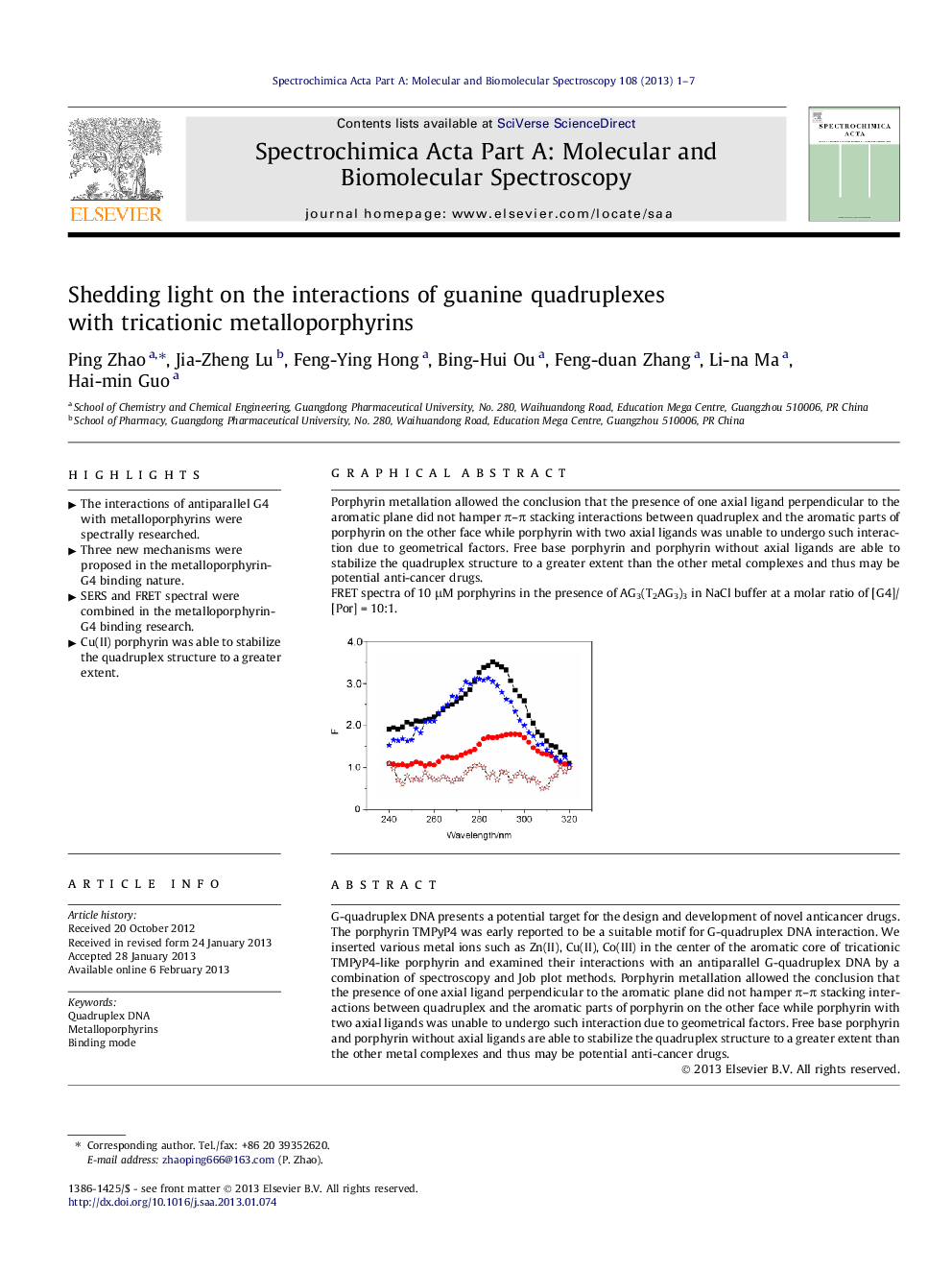| Article ID | Journal | Published Year | Pages | File Type |
|---|---|---|---|---|
| 1234745 | Spectrochimica Acta Part A: Molecular and Biomolecular Spectroscopy | 2013 | 7 Pages |
G-quadruplex DNA presents a potential target for the design and development of novel anticancer drugs. The porphyrin TMPyP4 was early reported to be a suitable motif for G-quadruplex DNA interaction. We inserted various metal ions such as Zn(II), Cu(II), Co(III) in the center of the aromatic core of tricationic TMPyP4-like porphyrin and examined their interactions with an antiparallel G-quadruplex DNA by a combination of spectroscopy and Job plot methods. Porphyrin metallation allowed the conclusion that the presence of one axial ligand perpendicular to the aromatic plane did not hamper π–π stacking interactions between quadruplex and the aromatic parts of porphyrin on the other face while porphyrin with two axial ligands was unable to undergo such interaction due to geometrical factors. Free base porphyrin and porphyrin without axial ligands are able to stabilize the quadruplex structure to a greater extent than the other metal complexes and thus may be potential anti-cancer drugs.
Graphical abstractPorphyrin metallation allowed the conclusion that the presence of one axial ligand perpendicular to the aromatic plane did not hamper π–π stacking interactions between quadruplex and the aromatic parts of porphyrin on the other face while porphyrin with two axial ligands was unable to undergo such interaction due to geometrical factors. Free base porphyrin and porphyrin without axial ligands are able to stabilize the quadruplex structure to a greater extent than the other metal complexes and thus may be potential anti-cancer drugs.FRET spectra of 10 μM porphyrins in the presence of AG3(T2AG3)3 in NaCl buffer at a molar ratio of [G4]/[Por] = 10:1.Figure optionsDownload full-size imageDownload as PowerPoint slideHighlights► The interactions of antiparallel G4 with metalloporphyrins were spectrally researched. ► Three new mechanisms were proposed in the metalloporphyrin-G4 binding nature. ► SERS and FRET spectral were combined in the metalloporphyrin-G4 binding research. ► Cu(II) porphyrin was able to stabilize the quadruplex structure to a greater extent.
